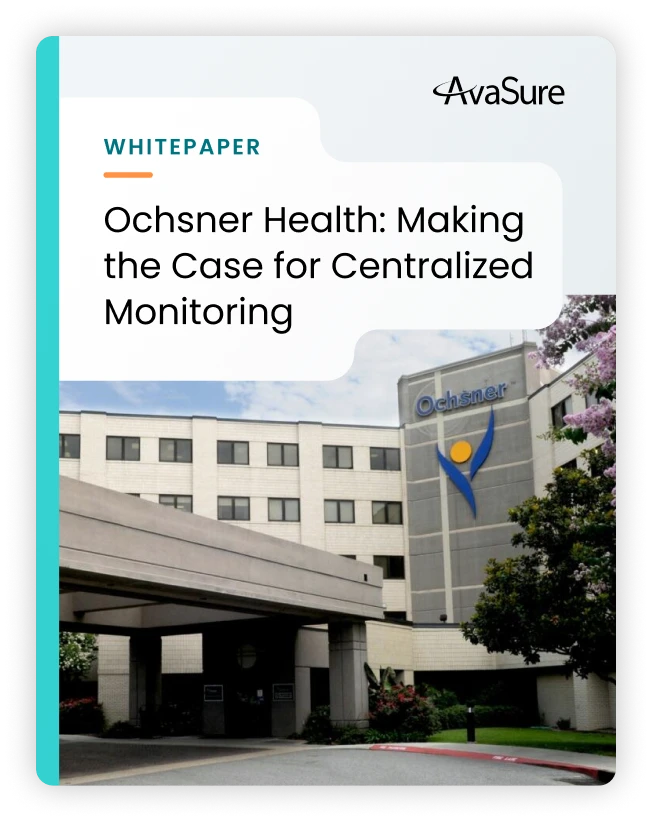Challenge
1:1 Patient sitters are costly and inefficient. As a result, many healthcare organizations are expanding their TeleSitter® programs.
Solution
A hub-and-spoke model enables a dedicated monitoring staff to work from a remote “hub” with one or more large observation stations
With a hub-and-spoke model, dedicated monitoring staff work from a remote “hub” with one or more large observation stations. Each staff member uses room devices to watch between 12 and 16 patients across various facilities or “spokes” across a metropolitan area, state, or region. This enables one trained staff member to proactively keep multiple patients safe.
Cost avoidance strengthens the return on investment (ROI) of the TeleSitter® solution
One fall can cost $1,500, and a fall with an injury can cost much more. Ochsner Health benchmarks both system and TeleSitter fall rates and has found that the fall rate is almost nonexistent compared with the system fall rate—a clear indication of a good ROI.
- 90% cost reduction with the TeleSitter® solution
- With the TeleSitter® solution, 8 to 9 technicians can monitor 90 to 108 patients—an approximate 1:12 ratio
- AvaSure estimates that the TeleSitter® solution costs less than $3 per patient monitoring hour. Ochsner Health’s experience has been consistent with these findings
Expanding clinical case uses
Although fall prevention is often the reason hospitals implement the TeleSitter® solution, there are a range clinical uses that improve patient and staff wellbeing. Remote safety monitoring can also play an important role in workplace violence prevention.
The potential to integrate TeleSitter program capabilities into other centralized services
Looking ahead, Ochsner Health believes its TeleSitter program will play a central role in providing a consistent virtual experience for patients and the potential to integrate its TeleSitter program capabilities with other centralized services.
“Many times, we put patients on camera to watch for respiratory distress, rather than for falls. If the remote monitor staff saw signs of respiratory distress, they escalated to the rapid response teams and called the bedside teams if intervention
was needed.”
-Jennifer Humbert, MSN, RN, Assistant Vice
President of Telemedicine at Ochsner Health
